Although the American Society of Criminology was cancelled this year, UC Press invites you to explore our groundbreaking books that facilitate teaching across disciplines. To request an exam copy, click on “Request an Exam or Desk Copy” on the book page, and this will take you to our distributor’s site where you can order your copy.
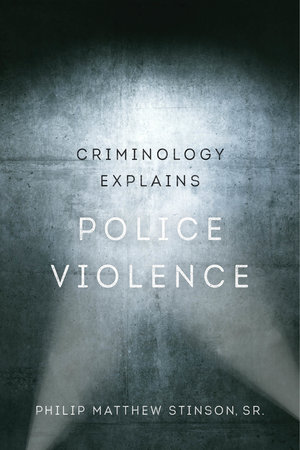
Criminology Explains Police Violence
by Philip Matthew Stinson Sr
Criminology Explains Police Violence offers a concise and targeted overview of criminological theory applied to the phenomenon of police violence. In this engaging and accessible book, Philip M. Stinson, Sr. highlights the similarities and differences among criminological theories, and provides linkages across explanatory levels and across time and geography to explain police violence.
This book is appropriate as a resource in criminology, policing, and criminal justice special topic courses, as well as a variety of violence and police courses such as policing, policing administration, police-community relations, police misconduct, and violence in society. Stinson uses examples from his own research to explore police violence, acknowledging the difficulty in studying the topic because violence is often seen as a normal part of policing.
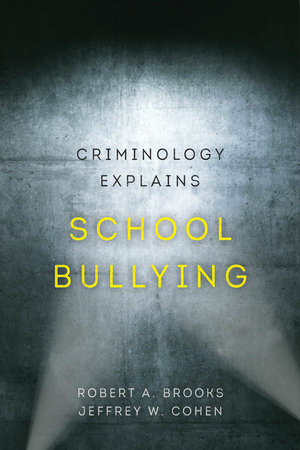
Criminology Explains School Bullying
by Robert A. Brooks & Jeffrey W. Cohen
In this book, Robert A. Brooks and Jeffrey W. Cohen provide a concise, targeted overview of the major criminological theories to explain the phenomenon of school bullying, bringing to life what is often dense and confusing material with concrete case examples. Criminology Explains School Bullying is a valuable resource in criminology or juvenile delinquency classes, as well as special-topics classes on school violence, bullying, or the school-to-prison pipeline. Charts, critical thinking questions, and implications for practice and policy illuminate real-world applications, making this is a go-to book for teachers, students, and researchers interested in an empirically driven synthesis of criminological theory as it applies to school bullying.
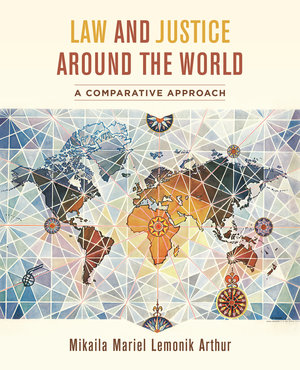
Law and Justice around the World: A Comparative Approach
by Mikaila Mariel Lemonik Arthur
Law and Justice around the World is designed to introduce students to comparative law and justice, including cross-national variations in legal and justice systems as well as global and international justice. The book draws students into critical discussions of justice around the world today by:
- taking a broad perspective on law and justice rather than limiting its focus to criminal justice systems
- examining topics of global concern, including governance, elections, environmental regulations, migration and refugee status, family law, and others
- focusing on a diverse set of global examples, from Europe, North America, East Asia, and especially the global south, and comparing the United States law and justice system to these other nations
- continuing to cover core topics such as crime, law enforcement, criminal courts, and punishment
- including chapter goals to define learning outcomes
- sharing case studies to help students apply concepts to real life issues
Instructor resources include discussion questions; suggested readings, films, and web resources; a test bank; and chapter-by-chapter PowerPoint slides with full-color maps and graphics.
By widening the comparative lens to include nations that are often completely ignored in research and teaching, the book paints a more realistic portrait of the different ways in which countries define and pursue justice in a globalized, interconnected world.

Alt-Right Gangs: A Hazy Shade of White
by Shannon E. Reid & Matthew Valasik
Alt-Right Gangs provides a timely and necessary discussion of youth-oriented groups within the white power movement. Focusing on how these groups fit into the current research on street gangs, Shannon E. Reid and Matthew Valasik catalog the myths and realities around alt-right gangs and their members; illustrate how they use music, social media, space, and violence; and document the risk factors for joining an alt-right gang, as well as the mechanisms for leaving. By presenting a way to understand the growth, influence, and everyday operations of these groups, Alt-Right Gangs informs students, researchers, law enforcement members, and policy makers on this complex subject. Most significantly, the authors offer an extensively evaluated set of prevention and intervention strategies that can be incorporated into existing anti-gang initiatives. With a clear, coherent point of view, this book offers a contemporary synthesis that will appeal to students and scholars alike.
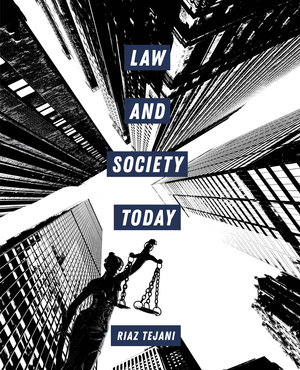
Law and Society Today
by Riaz Tejani
Law and Society Today is a problem-oriented survey of sociolegal studies, with a unique emphasis on recent historical and political developments. Whereas other texts focus heavily on criminal procedure, this book foregrounds the significant changes of the 2000s and 2010s, including neoliberalism, migration, multiculturalism, and the large influence of law and economics in law teaching, policy debates, and judicial decision-making.
Each chapter presents key concepts, real-world applications, and hypothetical problems that allow students to test comprehension. With an integrated approach to theory and practice and written in an accessible tone, this text helps students recognize the dynamic forces that shape the way the law is constructed and implemented, particularly how law drives social inequality.
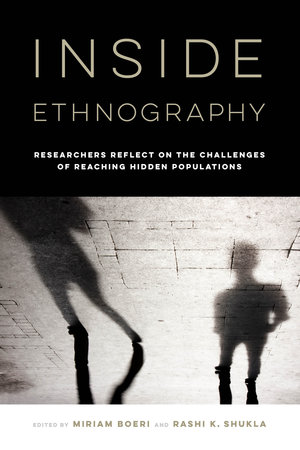
Inside Ethnography: Researchers Reflect on the Challenges of Reaching Hidden Populations
by Miriam Boeri & Rashi K. Shukla
While some books present “ideal” ethnographic field methods, Inside Ethnography shares the realities of fieldwork in action. With a focus on strategies employed with populations at society’s margins, twenty-one contemporary ethnographers examine their cutting-edge work with honesty and introspection, drawing readers into the field to reveal the challenges they have faced.
Representing disciplinary approaches from criminology, sociology, anthropology, public health, business, and social work, and designed explicitly for courses on ethnographic and qualitative methods, crime, deviance, drugs, and urban sociology, the authors portray an evolving methodology that adapts to the conditions of the field while tackling emerging controversies with perceptive sensitivity. Their judicious advice on how to avoid pitfalls and remedy missteps provides unusual insights for practitioners, academics, and undergraduate and graduate students.
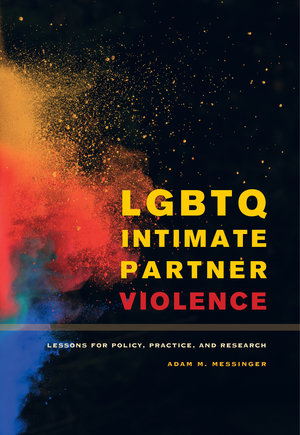
LGBTQ Intimate Partner Violence: Lessons for Policy, Practice, and Research
New in Paperback
by Adam M. Messinger
Nationally representative studies confirm that LGBTQ individuals are at an elevated risk of experiencing intimate partner violence. While many similarities exist between LGBTQ and heterosexual-cisgender intimate partner violence, research has illuminated a variety of unique aspects of LGBTQ intimate partner violence regarding the predictors of perpetration, the specific forms of abuse experienced, barriers to help-seeking for victims, and policy and intervention needs. This is the first book that systematically reviews the literature regarding LGBTQ intimate partner violence, draws key lessons for current practice and policy, and recommends research areas and enhanced methodologies.

Understanding Criminal Networks: A Research Guide
by Gisela Bichler
Understanding Criminal Networks is a short methodological primer for those interested in studying illicit, deviant, covert, or criminal networks using social network analysis (SNA). Accessibly written by Gisela Bichler, a leading expert in SNA for dark networks, the book is chock-full of graphics, checklists, software tips, step-by-step guidance, and straightforward advice. Covering all the essentials, each chapter highlights three themes: the theoretical basis of networked criminology, methodological issues and useful analytic tools, and producing professional analysis. Unlike any other book on the market, the book combines conceptual and empirical work with advice on designing networking studies, collecting data, and analysis. Relevant, practical, theoretical, and methodologically innovative, Understanding Criminal Networks promises to jumpstart readers’ understanding of how to cross over from conventional investigations of crime to the study of criminal networks.
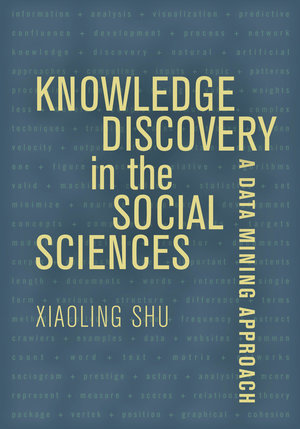
Knowledge Discovery in the Social Sciences: A Data Mining Approach
by Xiaoling Shu
Knowledge Discovery in the Social Sciences helps readers find valid, meaningful, and useful information. It is written for researchers and data analysts as well as students who have no prior experience in statistics or computer science. Suitable for a variety of classes—including upper-division courses for undergraduates, introductory courses for graduate students, and courses in data management and advanced statistical methods—the book guides readers in the application of data mining techniques and illustrates the significance of newly discovered knowledge.
Readers will learn to:
• appreciate the role of data mining in scientific research
• develop an understanding of fundamental concepts of data mining and knowledge discovery
• use software to carry out data mining tasks
• select and assess appropriate models to ensure findings are valid and meaningful
• develop basic skills in data preparation, data mining, model selection, and validation
• apply concepts with end-of-chapter exercises and review summaries
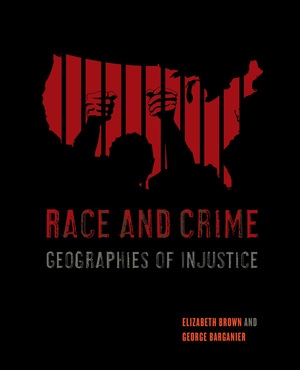
Race and Crime: Geographies of Injustice
by Elizabeth Brown & George Barganier
Criminal justice practices such as policing and imprisonment are integral to the creation of racialized experiences in U.S. society. Race as an important category of difference, however, did not arise here with the criminal justice system but rather with the advent of European colonial conquest and the birth of the U.S. racial state. Race and Crime examines how race became a defining feature of the system and why mass incarceration emerged as a new racial management strategy. This book reviews the history of race and criminology and explores the impact of racist colonial legacies on the organization of criminal justice institutions. Using a macrostructural perspective, students will learn to contextualize issues of race, crime, and criminal justice.
Topics include:
- How “coloniality” explains the practices that reproduce racial hierarchies
- The birth of social science and social programs from the legacies of racial science
- The defining role of geography and geographical conquest in the continuation of mass incarceration
- The emergence of the logics of crime control, the War on Drugs, the redefinition of federal law enforcement, and the reallocation of state resources toward prison building, policing, and incarceration
- How policing, courts, and punishment perpetuate the colonial order through their institutional structures and policies
Race and Crime will help students understand how everyday practices of punishment and surveillance are employed in and through the police, courts, and community to create and shape the geographies of injustice in the United States today.